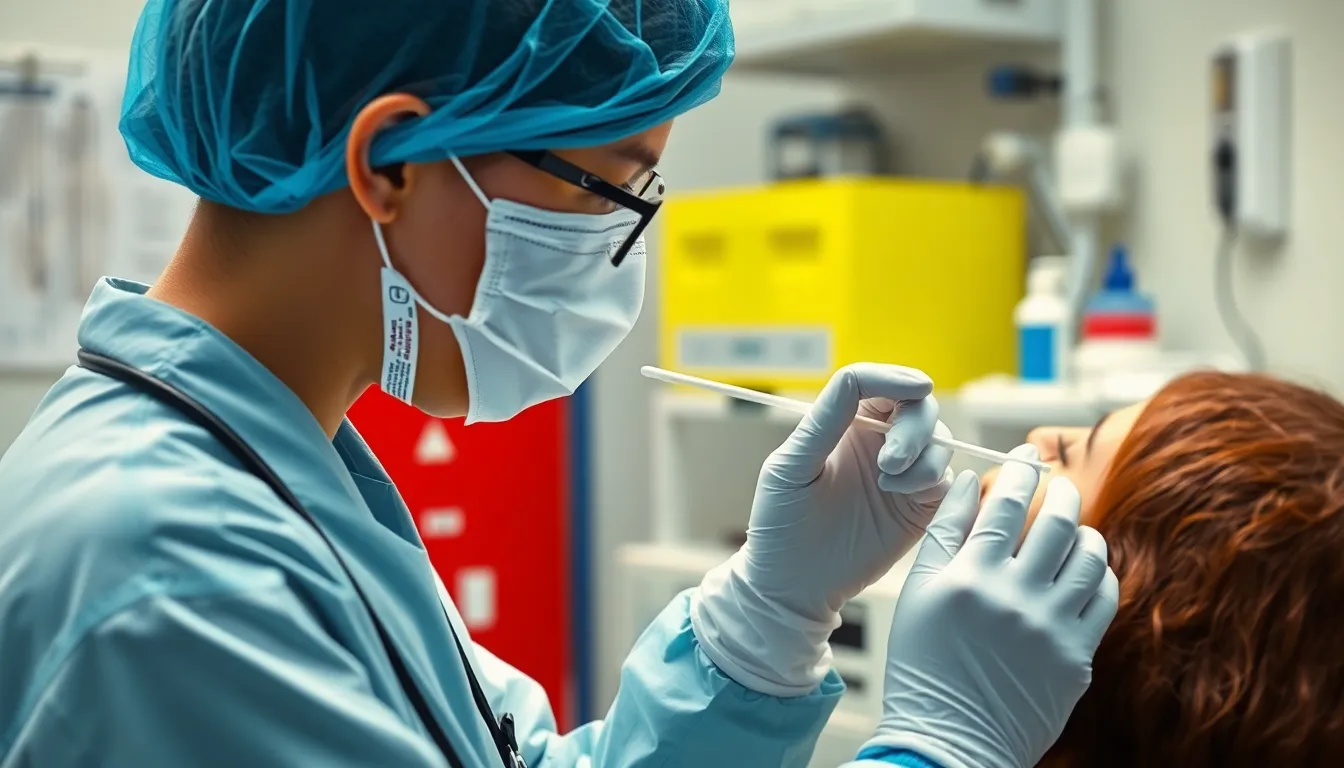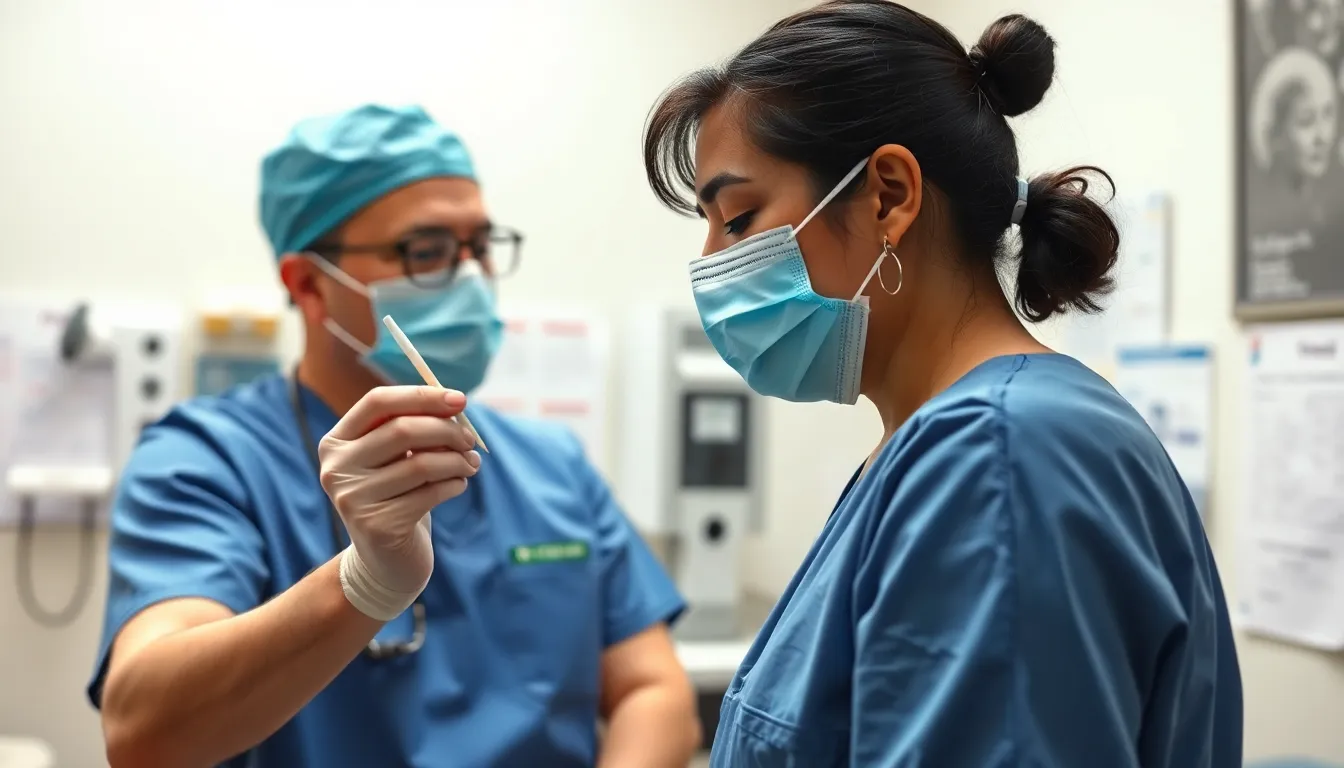In a world where germs seem to be the uninvited guests at every gathering, the viral culture swab steps in like a superhero armed with a cotton swab and a mission. This little tool might look harmless, but it’s a vital player in the battle against infectious diseases. It helps healthcare professionals identify the sneaky viruses lurking in the shadows, making it easier to kick them to the curb.
Table of Contents
ToggleWhat Is a Viral Culture Swab?
A viral culture swab is a key tool used in diagnosing viral infections. This swab collects samples from patients to facilitate virus detection and analysis.
Definition and Purpose
A viral culture swab refers to a specialized device that samples secretions from the throat, nose, or other areas. These samples are essential for isolating viruses in a lab setting. Healthcare professionals use this tool to identify specific viral pathogens, aiding in accurate diagnosis. Detecting viral infections at an early stage improves treatment options and controls the spread of diseases.
How It Works
A viral culture swab operates by first collecting a sample from an affected area, such as the respiratory tract. After obtaining the sample, it is placed in a viral culture medium to promote viral growth. Laboratories then incubate these samples under controlled conditions to allow viruses to replicate. Technicians monitor the cultures to identify the specific virus present. This method provides valuable insights into the infection, guiding subsequent patient care.
Types of Viral Culture Swabs

Viral culture swabs come in various forms, each serving specific diagnostic purposes in identifying viral infections.
Nasopharyngeal Swabs
Nasopharyngeal swabs collect samples from the upper part of the throat behind the nose. This type captures secretions that often contain respiratory viruses, such as influenza or SARS-CoV-2. Healthcare professionals insert a long, flexible swab into the nostril, reaching the nasopharynx. This method ensures a higher yield of viral particles compared to other swabs. Studies show nasopharyngeal swabs are particularly effective for respiratory virus detection.
Oropharyngeal Swabs
Oropharyngeal swabs gather samples from the back of the throat, specifically the oropharynx. This method targets viral pathogens that may reside in the throat area. The procedure involves using a swab to scrape the surface of the tonsils and the posterior pharyngeal wall. Oropharyngeal swabs efficiently identify viruses like Group A Streptococcus and some respiratory viruses. In certain cases, combining nasopharyngeal and oropharyngeal swabs enhances diagnostic accuracy.
Other Types
Other types of viral culture swabs include buccal swabs and conjunctival swabs. Buccal swabs collect samples from the inner cheek, useful for identifying viruses in oral tissues. Conjunctival swabs target the eye’s conjunctiva, often employed in cases of viral conjunctivitis. Each swab type is tailored to capture specific viral infections, adapting to various clinical scenarios. The choice of swab type depends on the suspected virus and the patient’s symptoms, ensuring proper identification and management of viral illnesses.
The Process of Collecting a Viral Culture Swab
Collecting a viral culture swab involves careful steps to ensure accurate results. Healthcare professionals follow established guidelines to maintain sample integrity.
Preparation and Protocol
Initial preparations include gathering necessary supplies. A sterile viral swab and viral transport medium are essential. Professionals ensure their hands are clean and wear gloves to prevent contamination. Patients are often positioned comfortably during the collection process. The swab is then gently inserted into the area of interest, such as the nasopharynx or oropharynx. Rotating the swab ensures optimal sample collection. After sufficient contact with the tissue, the swab is removed and then placed into the transport medium swiftly. Prompt placement in the medium prevents degradation of the viral sample.
Handling and Transportation
Safe handling of the swab begins immediately after collection. Technicians label the specimen with patient information and date. Proper sealing of the container prevents leaks and contamination during transport. Samples often require refrigeration, maintaining a temperature between 2°C to 8°C. Quick transportation to the laboratory ensures timely processing. Laboratories prioritize timely analysis for accurate virus identification. Following these protocols supports effective patient diagnosis and management.
Importance in Diagnostics
Viral culture swabs are essential in diagnosing viral infections. These specialized devices allow healthcare professionals to accurately identify pathogens from patient samples.
Role in Identifying Viral Infections
Identification of viral infections relies heavily on viral culture swabs. Collecting samples from the throat or nose enables laboratories to isolate specific viruses. Procedures such as using nasopharyngeal swabs accurately capture respiratory viruses, including influenza and SARS-CoV-2. Since accurate diagnosis informs treatment plans, early identification significantly enhances patient outcomes.
Impact on Treatment Decisions
Treatment decisions depend on the results obtained from viral culture swabs. Identifying the specific virus present guides healthcare professionals in choosing targeted therapies. Knowing whether an infection is viral or bacterial helps avoid unnecessary antibiotic use. Prompt and accurate diagnosis allows for timely interventions, directly influencing patient recovery times. Consequently, understanding the virus’s nature aids in controlling its spread within communities.
The viral culture swab is an indispensable tool in the fight against infectious diseases. By enabling precise detection of viral pathogens, it plays a vital role in guiding treatment decisions and improving patient outcomes. The meticulous collection process and careful handling of samples ensure that healthcare professionals receive accurate results, which ultimately contribute to effective disease management. As the landscape of viral infections continues to evolve, the importance of viral culture swabs will only grow, reinforcing their place in modern healthcare.




